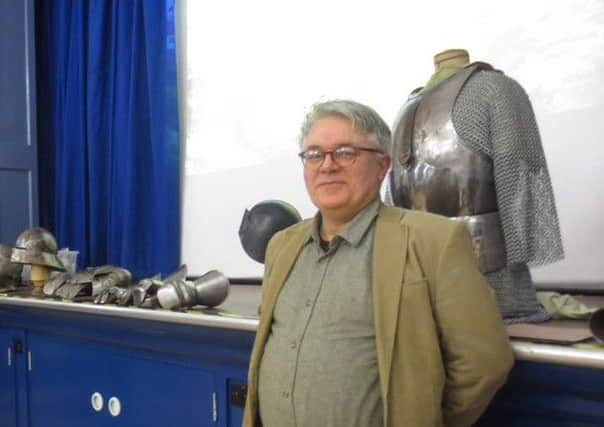Rothbury, History Society


Armour means protective clothing, evolving in warfare throughout the ages until the present day.
There is evidence of armour as far back as the time of Troy, to present day use with modern machinery and protective face coverings.
Advertisement
Hide AdAdvertisement
Hide AdArmour represents the culture of the time and the available materials. Metal, fabric, quilting and leather were commonly used, some being more effective than others.
Armour was part of the fabric of society, reflecting status, wealth, style and show.
Male fashion was extreme for over 1,000 years, with exaggerated shapes used to accentuate the chest, waist and legs by using belts, balloon sleeves and tights. Armour reflected that style, which is evidenced in churches, with effigies depicting extravagant hairstyles and clothes, fashion, wealth and status.
The talk discussed the period 1066-1550 when gowns were made of chain mail, very heavy and of different types. Quilted padding was an additional effective protection. For riding purposes, the armour was longer with a slit at the front to enable sitting on a horse.
Advertisement
Hide AdAdvertisement
Hide AdGradually styles changed, influenced by the clothes and styles of the day, and were worn outside the battlefield as fashion statements.
Loops of metal were made by rolling metal over wires and stitched to clothing. Later this became chain mail, the chains being linked together.
Hems were rising to above the knee.
Between 1300 and the 1330s men wore hose, individual leather leggings tied to the clothing. Laces, buttons, embossed leather, colour and intricate detail were popular, employing metal and fabric together. As metal work skills grew, the use of fabric and leather declined. Metal skirts became popular, with intricate hinges enabling easier movement.
Trade with Burgundy flourished by exchanging wool with tapestries. Mass production grew.
Advertisement
Hide AdAdvertisement
Hide AdAs armour became more complex and larger in design, shields were redundant. Plate armour took the place of chain mail, which proved a more effective protection as weapons changed.
The style of helmets was also adapted to meet the challenges. They became flexible, made of multiple pieces riveted together with moving parts to give maximum protection and mobility.
Armour for elbows and knees was given articulated joints to allow easier movement.
Swords, daggers, pole lances and crossbows all developed over the centuries. There was literally an arms race between armour and weaponry linked to technology and skills of working with metals. Increased production of iron and steel enabled mass supplies for the armies.
Advertisement
Hide AdAdvertisement
Hide AdThe next meeting is on Friday, March 16, at 7.30pm, in the Jubilee Hall, when the speaker will be Richard Stevenson, presenting the topic Victorian And Georgian Quayside Characters.
Members and new members are most welcome.